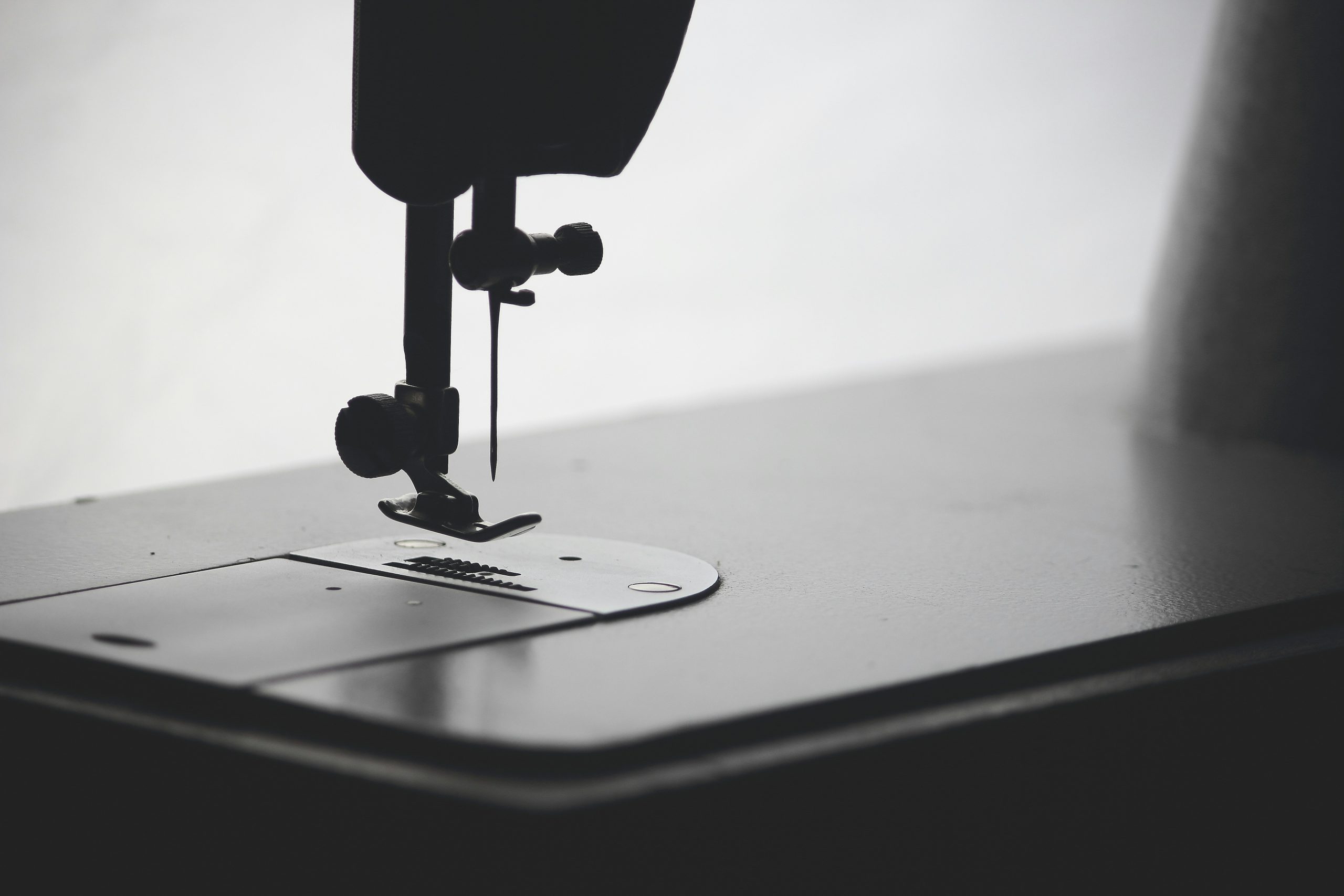Sewing Machines for Beginners & Beyond: My Top Sewing Machine Picks
In my guide to buying a sewing machine, I outlined the features to look for as you’re shopping, whether you’re a beginner buying your first machine or an experienced sewist ready to level up. Here, I’ve compared some of the machines on the market today and am giving you my top picks, based on their capabilities.
Keep in mind that with the exception of my own machine, the Bernina B535, I haven’t tried these models personally. It’s best if you can test your choices in person, especially if you’ll be sewing with thicker fabrics or sewing over thick seams.
Prices are accurate at the time of writing this article.
Best Sewing Machine Under $500: Brother CS7000X
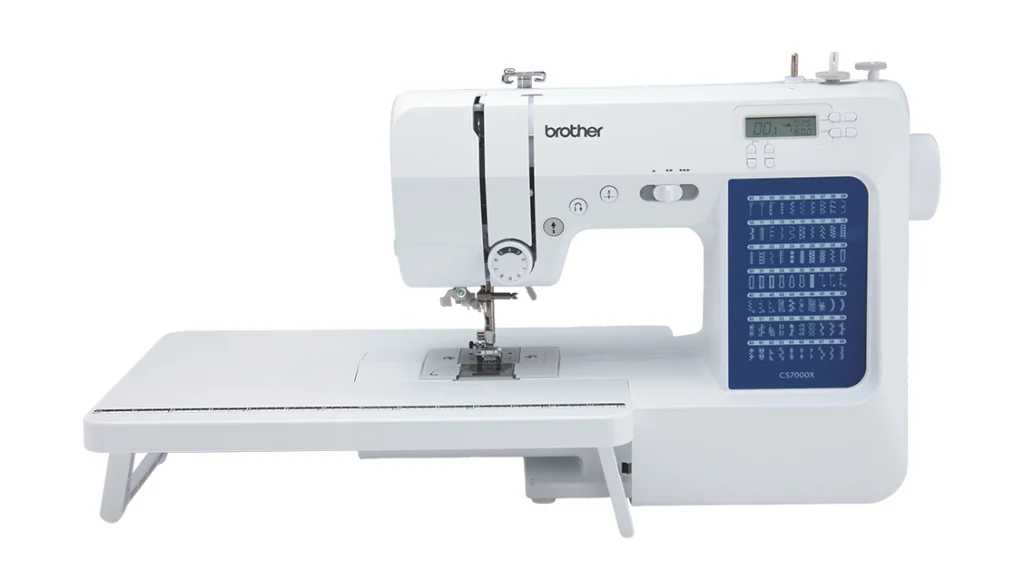
Features:
- Sewing speed can be adjusted
- Needle can be programed to stop in the down position
- Sews straight stitches and stretch stitches
- Needle moves left and right
- Longest stitch length is 5mm
- Feed dogs drop (good for free-motion quilting)
- Has an extension table
- Has a removable free arm
What’s Lacking:
- Can’t adjust presser foot pressure
- Throat space of 6.2 inch is on the small side for quilting
- No knee lift
Weight: 10.5 lbs.
Dimensions: 16.26″ (W) x 12.21″ (H) x 6.65″ (D)
This is my top pick of the entry-level models that I evaluated. It has most of the features that I consider essential and includes an extension table, which is nice to have. It’s suitable for sewing garments — the stretch stitches will come in handy for knits — and if you’re a quilter, you can probably make the throat space work.
You can’t adjust the pressure of the presser foot, so thick fabric may not move well, and thin/slicky fabric might move too much. These techniques shared on PatternReview.com can help.
This sewing machine is most suitable for beginners; you’ll probably want to upgrade if you become a regular sewist, or if you find yourself needing more throat space for quilting large projects. When this sewing machine fails, it will likely be cheaper to replace it than to repair.
Other Entry-Level Machines
- Brother XR9550 – The XR9550 is similar in price and features to my top pick but has a smaller throat space at 5.7 inches. $230
- Singer Quantum Stylist 9960 – The Quantum Stylist is twice the cost as the Brother, but without twice the features. It was unclear if the needle could be programmed to stop in the down position; I couldn’t find mention of it in the manual. $500
- Singer Heavy Duty 4452 (Mechanical) – This machine doesn’t have an adjustable sewing speed and its maximum stitch length is 1mm shorter than the Brother. It also has terrible reviews on Reddit. $200
- Bernette 05 Academy (Mechanical) – I love the look of this machine, but you can’t program the needle to stop in the down position, and adjusting the sewing speed seems fiddly (you can reduce it to half speed only). The throat space is only slightly larger than the Brother. At $400, it doesn’t seem worth the extra cost.
- Janome HD1000 (Mechanical) – On the Janome HD1000, you can only adjust the sewing speed with the foot control, which isn’t as convenient as having a speed control option on the machine itself. The needle can’t be programmed to stop in the down position, and the maximum stitch length is only 4mm, 1 mm less than the Brother. As someone who bastes frequently, I want the longest stitch that I can get. It also lacks an extension table. $329
- Janome HD3000 (Mechanical) – Like the HD1000, speed control is only through the foot pedal. The needle can’t be programmed to stop in the down position, although it can be moved to 15 different positions, which is rare at this price point. It has the same limitations as the HD1000 in terms of the stitch length and the missing extension table. $483
Best Sewing Machine Under $1,000: Juki F-300
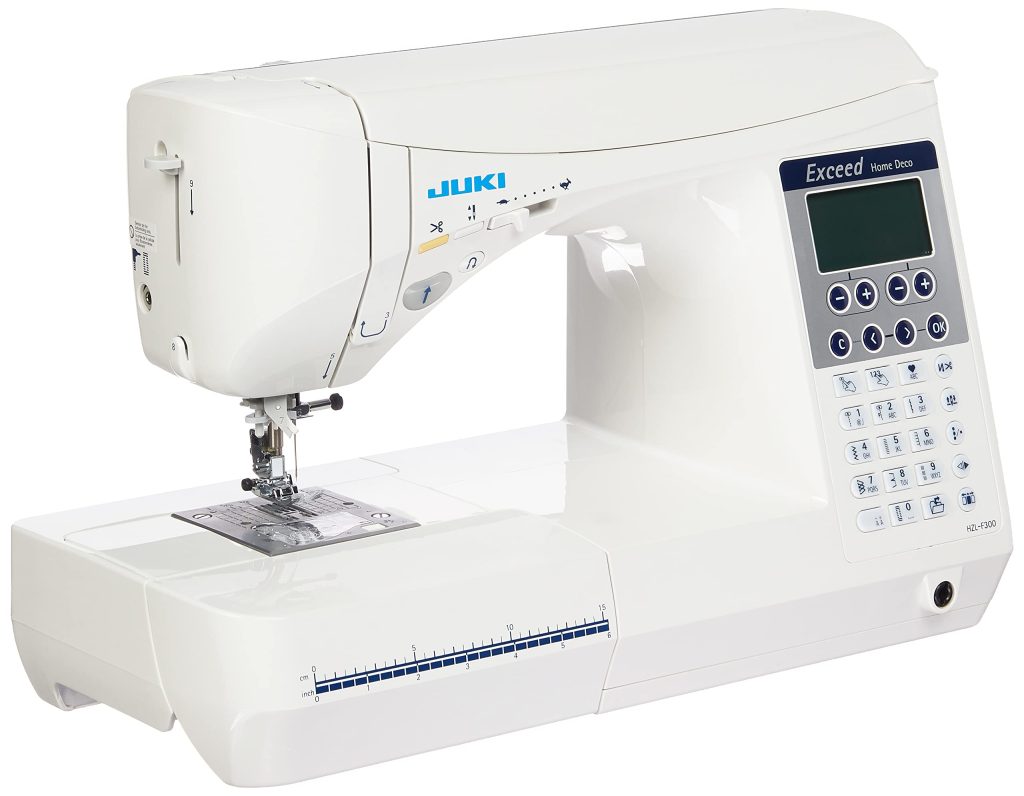
Features:
- Sewing speed can be adjusted
- Needle can be programed to stop in the down position
- Sews straight stitches and stretch stitches
- Needle moves left and right
- Pressure of the presser foot can be adjusted
- Longest stitch length is 5mm
- Has 8 inches of throat space
- Feed dogs drop (good for free-motion quilting)
- Option for an extension table and knee lift (may need to be purchased separately)
- Has a removable free arm
Weight: 21.6 lbs.
Dimensions: 17.5”(W) x 11.5”(H) x 8.25”(D)
If you can afford to start with the Juki or something similar, I highly recommend it. The Juki meets all of my criteria, and it has a generous 8-inches of throat space for quilters.
Juki machines are known for their high quality, and they have a large fan base, which you can find on PatternReview.com. This machine will endure, and it has enough features that you can grow into it without needing to upgrade.
The F-600 model has more feet and more stitches, but at double the price. You could purchase the sewing feet separately for the F-300 and and still come out ahead.
My only hesitation with this machine, and it’s a minor one, is that I don’t like the design of the exterior. Other machines look more modern, or more industrial, like the Juki listed below.
Other Mid-Range Machines
- Juki TL-2000QI (Mechanical) – This is a straight-stitch-only machine that would be suitable for quilting, but may be limiting for garment sewing if you’re sewing knits. It doesn’t have as much throat space as the Juki F-300 (6.5 inches compared to 8) but the maximum stitch length of 6mm is ideal for basting. $800
- Baby Lock Jubilant – The Jubilant has most of my top features, but it has 6.25 inches of throat space, which isn’t ideal for quilters. It also doesn’t come with an extension table and can’t accommodate a knee lift. And I dislike the big flower illustration on the front of the machine. $630
Best Sewing Machine Under $2,000: Bernette B77
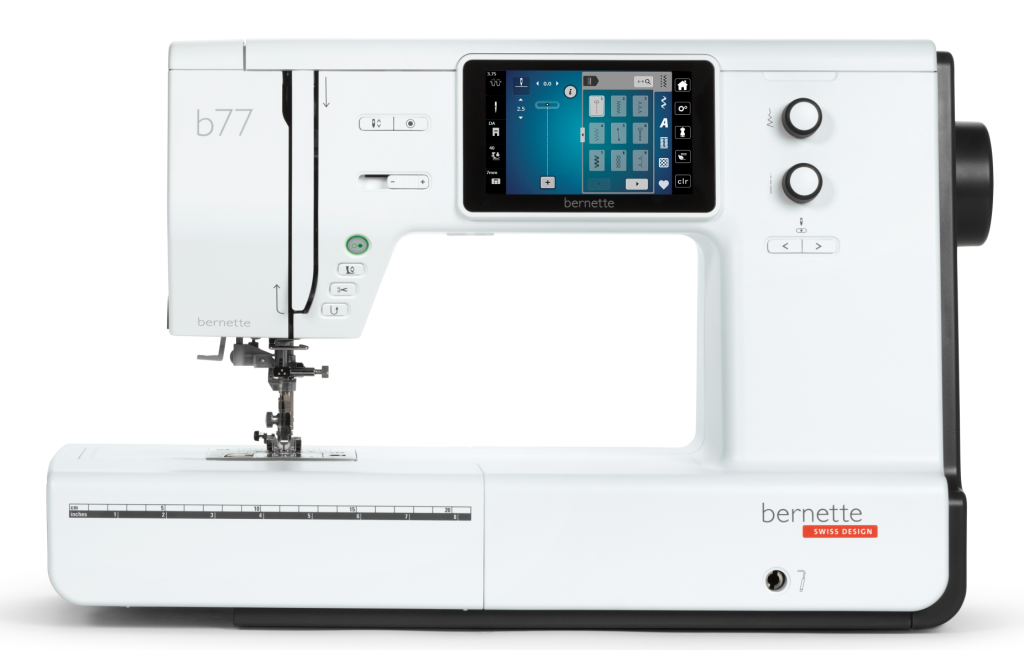
Features:
- Sewing speed can be adjusted
- Needle can be programed to stop in the down position
- Sews straight stitches and stretch stitches
- Needle can move left and right (15 positions)
- Pressure of the presser foot can be adjusted
- Longest stitch length is 5mm
- Has 9 inches of throat space
- Feed dogs drop (good for free-motion quilting)
- Has a knee lift
- Has a removable free arm
- Has a dual feed system to feed fabric through evenly
What’s lacking:
- No extension table (can be purchased separately)
Weight: 22 lbs.
Dimensions: 19.5″ (W) x 12.5″ (H) x 7.5″(D)
Is the Bernette worth paying $1,400 more than the Juki? I haven’t sewn with these models, so I can’t say for sure, but the stitch quality may be an improvement, and the built-in walking foot (the dual feed system) can give you better pattern and seam matching. The Bernette B77 has the most throat space of any machine on this list, making it ideal for quilting.
In my opinion, Bernettes and Berninas are better-looking machines than Jukis, but your machine will likely be covered by a dust cover when you’re not sewing, so looks may not play an outsized role in your decision.
Best Sewing Machine Under $5,000: Bernina B535
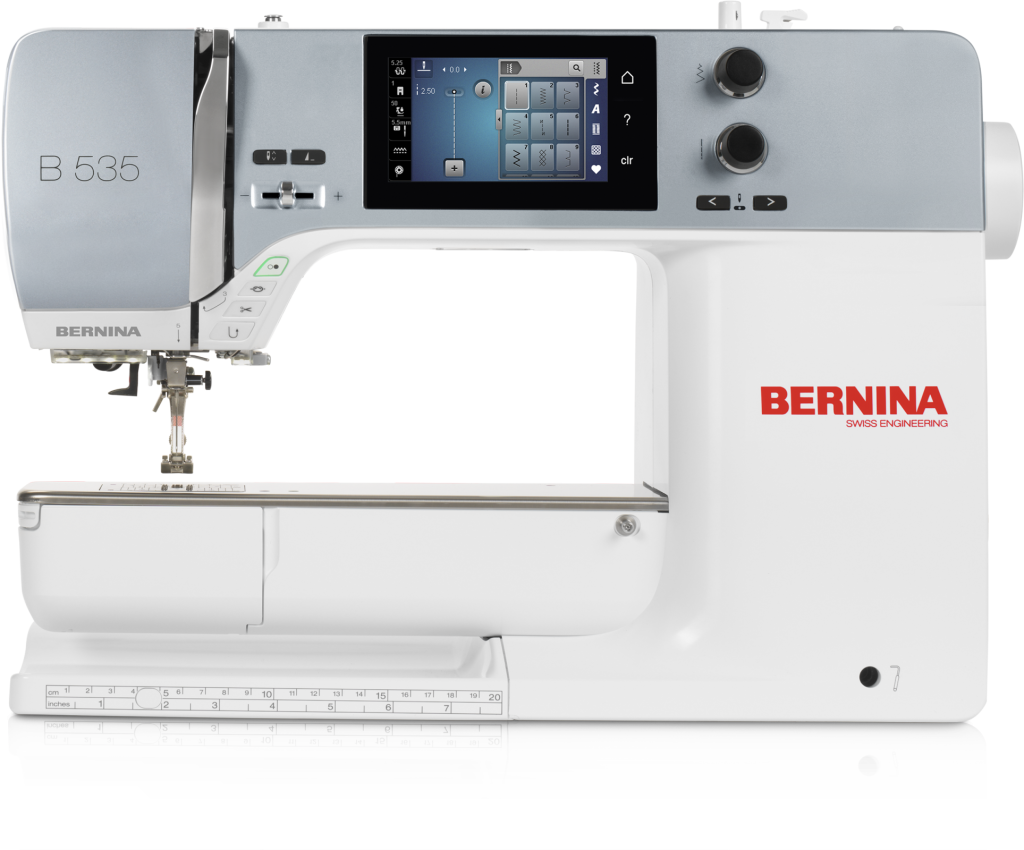
Features:
- Sewing speed can be adjusted
- Needle can be programed to stop in the down position
- Sews straight stitches and stretch stitches
- Needle can move left and right (11 positions)
- Has a maximum recommended fabric thickness of 10.5mm (most other machines max out at 6mm)
- Pressure of the presser foot can be adjusted
- Longest stitch length is 6mm
- Has 8.5 inches of throat space
- Feed dogs drop (good for free-motion quilting)
- Has an extension table
- Has a knee lift
- Has a removable free arm
What it’s lacking:
- Affordable feet; Bernina feet cost more than other brands
Weight: 24 lbs.
Dimensions: 18.1″ (W) x 12.9″ (H) x 7.9″ (D)
A Bernina machine is a step up in price from the Bernette (also manufactured by Bernina), but keep in mind that you rarely pay full price at a dealer (my B535 was $3,000, not the suggested $4,000 retail price). After upgrading from a $400 Brother machine, I couldn’t believe the difference in quality. The Bernina feels sturdier, it doesn’t suck fabric underneath the throat plate (the bane of my existence with previous machines), and my tension is always correct. My Bernina also doesn’t chew up fabric at the start of a seam, ever.
For me, the Bernina B535 is on the heavy side and not something that I’d want to take to class or travel with. But I do all of my sewing at home, so weight isn’t an issue. If you’ll be traveling with your machine regularly, you may want to consider a lighter option or budget for a travel machine (two machines!).
Why Spend More on a Machine?
You’ll notice that on this list, as we go higher in price, the machines get bigger and heavier. Compare the 10 lb. Brother with the 24 lb. Bernina.
Bigger machines tend to have higher-powered motors that can more easily handle thicker fabrics. They’re also more long-lasting. When an entry-level machine is in need of repairs, the cost to repair it may be more than the cost of the machine itself. Higher-end machines are built with sturdier parts and can usually be repaired if issues arise.
In the three years that I’ve owned a Bernina, I haven’t had any real issues. I take it to the dealer for a yearly cleaning, and I recommend that you budget for maintenance when you’re choosing your machine. I pay about $150-$200 for my machine’s annual cleaning.

